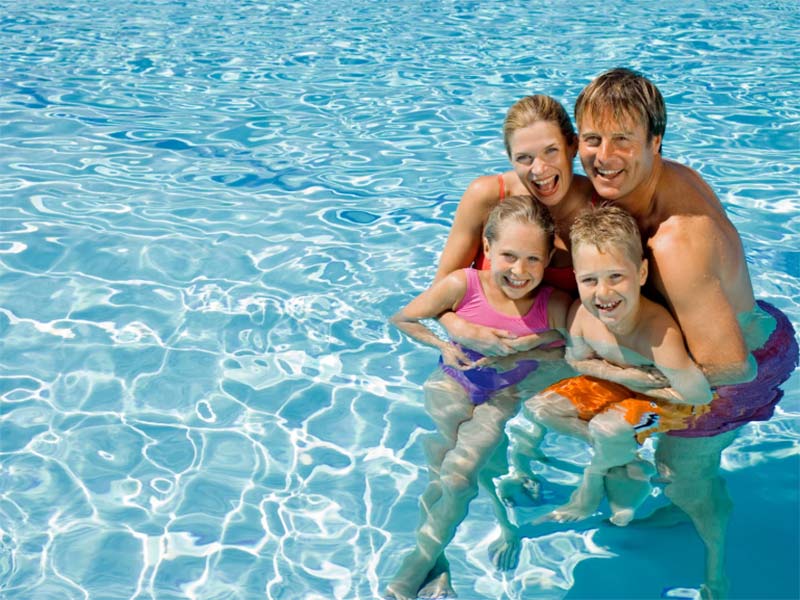Water Safety Around Pools: Protecting Your Family and Friends

Water Safety Around Pools: Protecting Your Family and Friends
Whether you have a backyard pool or are visiting a public pool, water safety is essential to ensure everyone has a fun and safe experience. Drowning is a leading cause of injury and death, particularly among children, but with the right precautions, you can greatly reduce the risk and enjoy your pool with peace of mind.
Here’s some important water safety information to keep in mind:
- Supervision is Key
Always supervise children and non-swimmers around the pool, even if they are wearing floatation devices. Drowning can happen in seconds, and it’s often silent. It’s important to stay within arm’s reach of young children or weak swimmers at all times. Make sure there is an adult watching the pool, and if you’re in a group, designate one person as the “water watcher” to stay focused on the swimmers.
- Learn to Swim
One of the best ways to ensure safety around water is to learn how to swim. Encourage everyone, especially children, to take swimming lessons. Knowing how to float, tread water, and swim to safety can make a huge difference in an emergency situation.
- Install Pool Barriers
Pool fences are a must-have for any pool, especially if there are young children in the house. The U.S. Consumer Product Safety Commission recommends that pools be enclosed by a fence at least four feet high. Consider a self-closing, self-latching gate to keep children from gaining access without an adult. Fencing should be clear of climbable objects and should separate the pool from the house and any other areas of the yard.
- Use Pool Covers
When the pool is not in use, cover it with a safety pool cover that meets the standards of the American Society for Testing and Materials (ASTM). These covers can prevent accidental falls into the water and also keep debris out of your pool. Make sure the cover is securely fastened and only remove it when the pool is ready for use.
- Know CPR and First Aid
In case of an emergency, it’s important to know CPR (Cardiopulmonary Resuscitation) and basic first aid. Take a course to learn how to react in situations like water-related accidents. Being able to perform CPR can save a life while waiting for medical help to arrive.
- No Diving in Shallow Water
Make sure everyone understands the importance of not diving into shallow water. Diving into shallow water can lead to serious injuries, including spinal cord damage. Always ensure the pool has clear signs indicating the depth, and remind swimmers to dive only in designated deep areas of the pool.
- Avoid Alcohol and Pool Activities
Never consume alcohol before or during swimming. Alcohol impairs judgment, coordination, and reaction time, making it harder to respond to emergencies. Keep alcohol consumption limited to after you’ve exited the pool to ensure everyone is in control while swimming.
- Be Aware of Pool Drains and Suctions
Pool drains can be powerful, and swimmers should be cautious around them. Ensure all drain covers are in place and meet safety standards. Children should be taught to avoid sitting or playing near drains. Additionally, consider installing safety vacuum release systems (SVRS), which automatically shut down the pool pump if a drain cover becomes blocked.
- Swim with a Buddy
It’s always safer to swim with a buddy. Whether you’re swimming in a backyard pool, at a community pool, or in a lake, having someone nearby can make all the difference. A buddy can help in case of an emergency, and swimming together promotes accountability and safety.
- Make Sure Your Pool is Well-Maintained
A well-maintained pool is safer for everyone. Keep the pool clean by regularly removing debris and ensuring that the filtration and circulation systems are functioning properly. Ensure that the pool’s chemical levels are balanced to prevent accidents caused by poor water quality, which can irritate eyes, skin, or even cause accidents if the water becomes unsafe.
- Educate Children and Adults
Make sure everyone—especially children—understands basic pool safety rules, such as no running around the pool, no pushing others into the pool, and not swimming right after eating. Set clear guidelines and ensure that everyone is aware of them before they enter the water.
- Be Mindful of Weather Conditions
Weather conditions play a big role in water safety. Avoid swimming in the pool during storms or when lightning is present, as water is a good conductor of electricity. Check weather forecasts before heading into the pool to ensure it’s safe to swim.
Final Thoughts on Water Safety
Water safety should always be a top priority, whether you’re enjoying a pool in your backyard or visiting a public pool. By following the proper safety precautions and educating everyone on the importance of safe swimming, you can create a safe and enjoyable environment for all. Remember, water safety isn’t just about having fun—it’s about preventing accidents and ensuring everyone can enjoy the pool with confidence and peace of mind. Stay safe and swim responsibly!

